

/en/excel2013/finalizing-and-protecting-workbooks/content/
Let's say you have a worksheet with thousands of rows of data. It would be extremely difficult to see patterns and trends just from examining the raw information. Similar to charts and sparklines, conditional formatting provides another way to visualize data and make worksheets easier to understand
Conditional formatting allows you to automatically apply formatting—such as colors, icons, and data bars—to one or more cells based on the cell value. To do this, you'll need to create a conditional formatting rule. For example, a conditional formatting rule might be: If the value is less than $2000, color the cell red. By applying this rule, you'd be able to quickly see which cells contain values less than $2000.
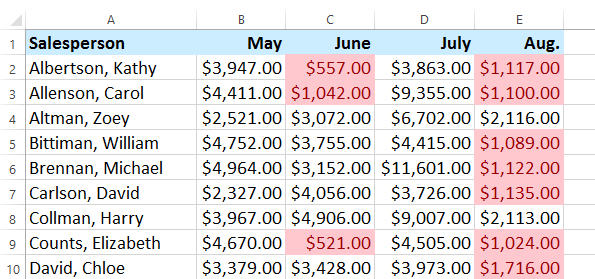 Conditional formatting marking values less than $2000
Conditional formatting marking values less than $2000In our example, we have a worksheet containing sales data, and we'd like to see which salespeople are meeting their monthly sales goals. The sales goal is $4000 per month, so we'll create a conditional formatting rule for any cells containing a value higher than 4000.
 Selecting the desired cells
Selecting the desired cells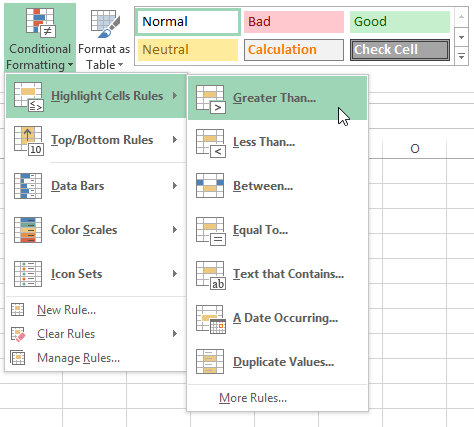 Selecting a conditional formatting rule
Selecting a conditional formatting rule Creating a conditional formatting rule
Creating a conditional formatting rule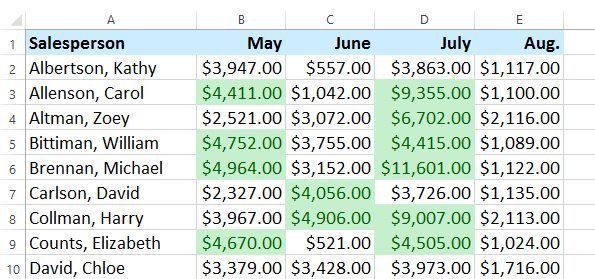 Conditional formatting applied to the data
Conditional formatting applied to the dataYou can apply multiple conditional formatting rules to a cell range or worksheet, allowing you to visualize different trends and patterns in your data.
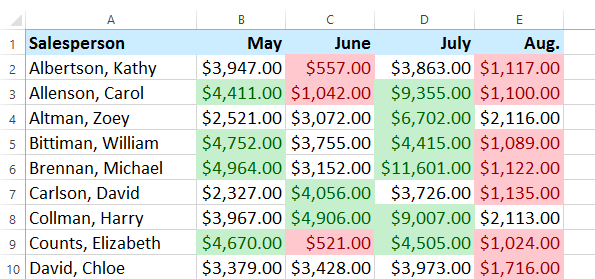 A worksheet with multiple conditional formatting rules
A worksheet with multiple conditional formatting rules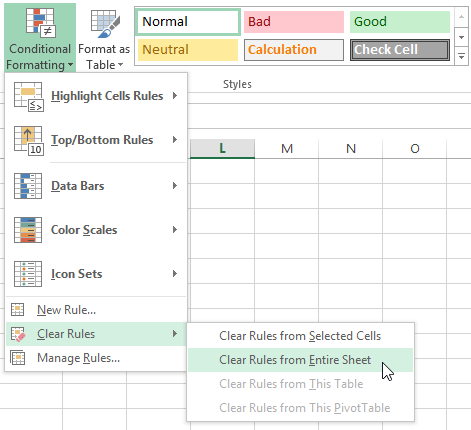 Removing conditional formatting rules
Removing conditional formatting rules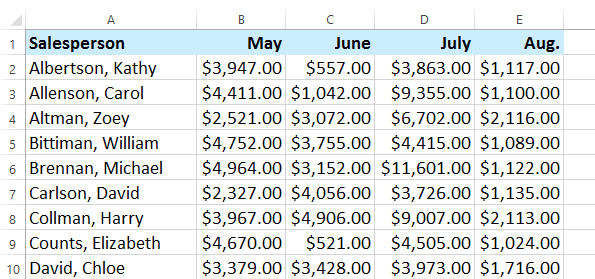 The conditional formatting removed from the worksheet
The conditional formatting removed from the worksheetClick Manage Rules to edit or delete individual rules. This is especially useful if you have applied multiple rules to a worksheet.
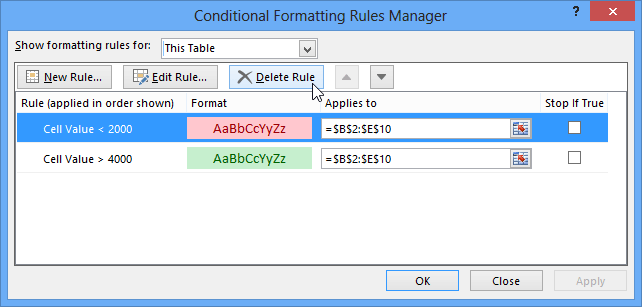 Deleting an individual rule
Deleting an individual rule
Excel has several predefined styles—or presets—you can use to quickly apply conditional formatting to your data. They are grouped into three categories:
 Data Bars
Data Bars Color Scales
Color Scales Selecting the desired cells
Selecting the desired cells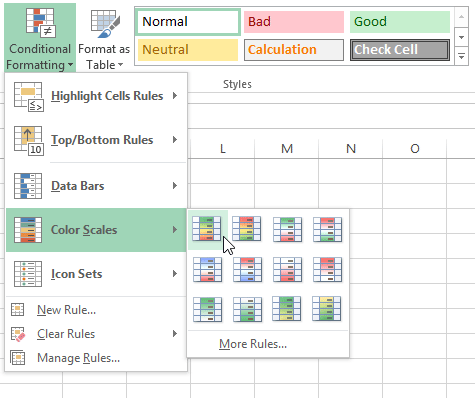 Applying a preset conditional formatting rule
Applying a preset conditional formatting rule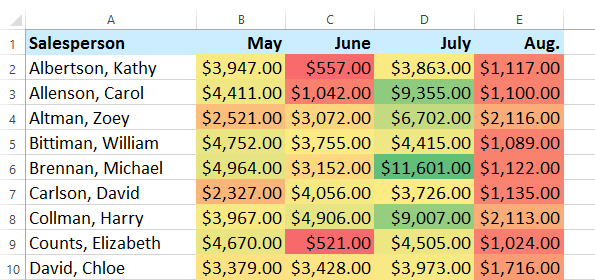 The applied conditional formatting preset
The applied conditional formatting preset/en/excel2013/pivottables/content/